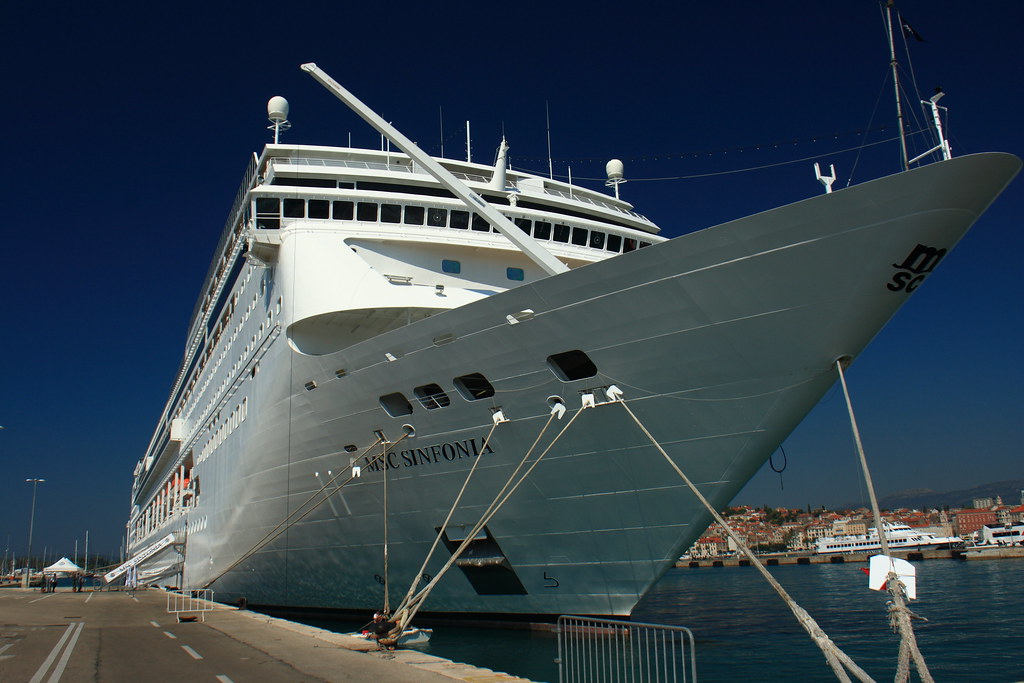In the serene coastal town of Syracuse, Italy, a catastrophic incident unfolded, sending shockwaves through the maritime community. The renowned MSC Sinfonia, a majestic cruise ship, reportedly caused substantial damage to several boats and the marina’s piers during an unexpected turn of events. This incident has not only raised concerns about the safety of cruise ships navigating through narrow waterways but has also sparked a debate on the responsibility and accountability of large vessels in such delicate environments.
The Incident:
The picturesque marina of Syracuse, nestled along the southeastern coast of Sicily, became a scene of chaos when the MSC Sinfonia reportedly sank two boats and caused significant damage to others and the marina’s piers. Eyewitnesses describe the terrifying moments as the cruise ship made an unexpected maneuver, colliding with the smaller vessels and structures along the waterfront.
Local authorities were quick to respond, initiating search and rescue operations to ensure the safety of those on board the affected boats and prevent any environmental hazards. Fortunately, there were no reported casualties among the boat owners and passengers, but the financial and emotional toll on the local maritime community was undeniable.
The aftermath of the incident left the marina in disarray, with sunken boats, debris, and structural damage scattered throughout the once-tranquil harbor. The implications of such an accident extend beyond the immediate damages, as the community now grapples with the economic and logistical challenges of restoring the marina to its former glory.
Investigation and Accountability:
As authorities launched an investigation into the incident, questions arose about the circumstances that led to the MSC Sinfonia’s unexpected course deviation. Preliminary findings suggest that a combination of navigational errors, adverse weather conditions, and mechanical issues may have played a role in the accident.
The incident has reignited the discussion on the accountability of large cruise ships when navigating through sensitive waterways and marinas. Critics argue that stricter regulations and enhanced safety protocols should be implemented to prevent similar incidents in the future. Proponents of the cruise industry, however, stress the need for a comprehensive and fair investigation before drawing conclusions.
Impact on the Maritime Community:
The repercussions of the MSC Sinfonia incident extend beyond the immediate physical damages. The affected boat owners face not only the financial burden of repairing or replacing their vessels but also the emotional toll of seeing their livelihoods disrupted. Local businesses that depend on the marina’s vibrant atmosphere are also grappling with the aftermath, as the incident has disrupted tourism and maritime activities in the region.

Moving Forward:
As Syracuse works towards recovering from this unprecedented incident, there is a collective call for proactive measures to prevent similar accidents in the future. Enhanced safety regulations, increased training for cruise ship crews navigating through intricate waterways, and improved communication between maritime authorities and vessel operators are among the proposed solutions.
The MSC Sinfonia incident serves as a stark reminder of the delicate balance between the majesty of large cruise ships and the vulnerability of smaller vessels and marinas. As the investigation unfolds and the community rallies to rebuild, the maritime industry is left with a sobering lesson about the importance of prioritizing safety in every voyage, no matter the size of the vessel.


